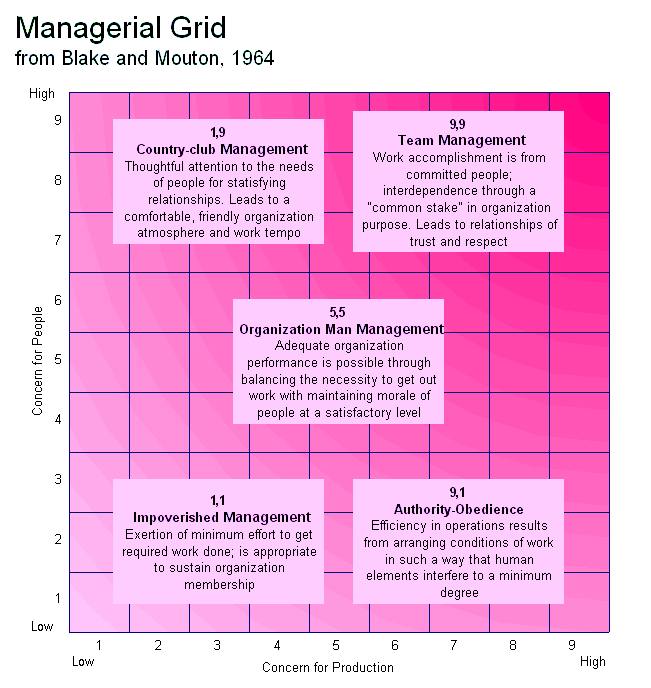Within a business it can become difficult to differentiate between Leadership and Management so what is the difference?
Leadership is defined as “A relationship through which one person influences the behaviour or actions of other people (Mullins 2007). A leader within a business will work with employees on a close scale, have a working relationship with the employees and ultimately have the ability to influence what they do leading them in their work and motivating them. Leaders need to have a number of different skills to make this possible as without such skills they will not be able to motivate, encourage people to work, and improve sectors.
How is this different to Management?
Management with in a business can be seen as “The structures and processes involved in directing an organisation towards the achievement of its objectives” (Worthington & Britton 2009). This is different to leadership as a manager is a person who is there to get what they need done whether that means by exerting force on employees or granting them flexibility and freedom to complete the work, compared to a leader a manager can be seen as a middle man between the different levels of the business who implement policy.
The ‘managerial grid’ what is it?

(Blake, R. Mouton, J S. 1964)
This grid is used to look evaluate management styles, it compares the two aspects of Concern for production which looks at how the manager tries to make sure production is at a maximum resulting in larger profits for the business and concern for people which looks at whether the manager is placing more emphasis on the needs of the employees working on the product. The higher the score the more effective a manager is deemed to be, for example if a manager scored 1,1 this would mean that they have little concern for the people working on the product as well as little concern over how the product turns out whereas a score of 9,9 would show the manager really cares and takes a interest in both areas maximising production and motivation.
Such a strong leader?
One leading from history that has shown an obvious strong leadership streak (although not used positively) is Russia Stalin, who used his unique skills advancing from the role of general sectary in the Bolshevik party and being generally unknown to a incredibly strong leader known worldwide. By using his skills Stalin won over support by performing speeches to the public, bombarding streets with propaganda promoting communism and a ‘better life’ under it, he made sure he looked at all the different groups within Russia from the peasants to the rich promising them each something they wanted.
Conclusion
Management and leadership play a very close role within businesses and need to have a good working environment to make sure that work is completed and employees remain motivated and happy and ultimately produce more work.
References
Brassington, F. Pettitt, S. (2007) Essentials of marketing. 2nd ed. Essex: Pearsons Education Limited
Blake, R. Mouton, J S. The managerial grid. 5th ed. Gulf Publishing. Houston, 1964
Mullins, L. (2007) Management and Organisational Behaviour. 8th edition. Essex: Pearson Education Limited